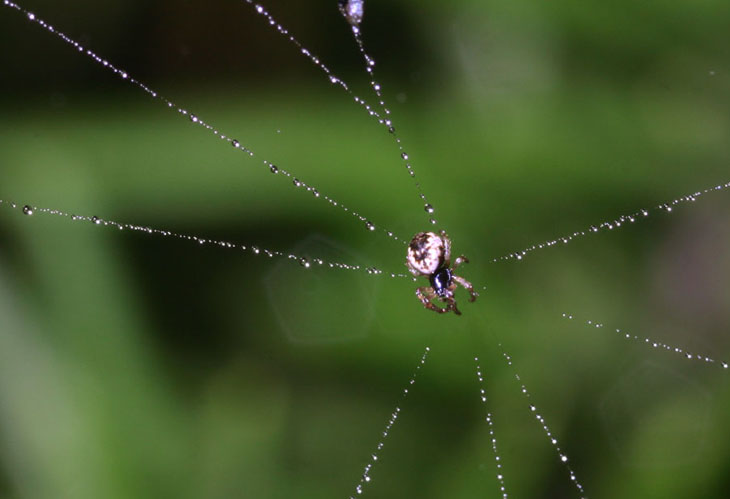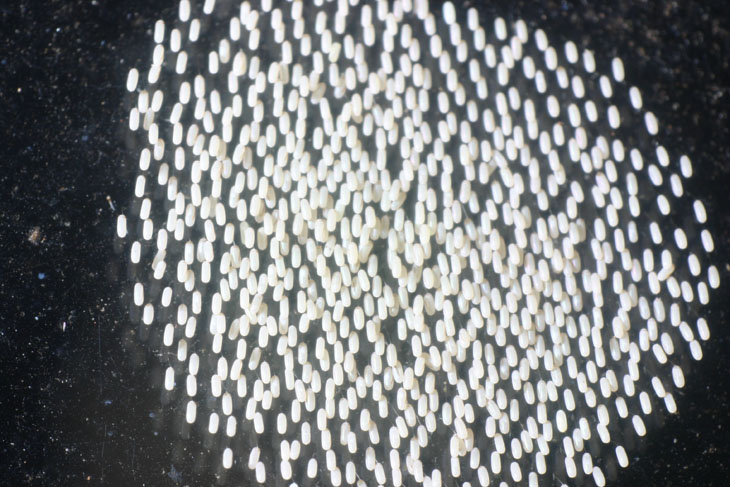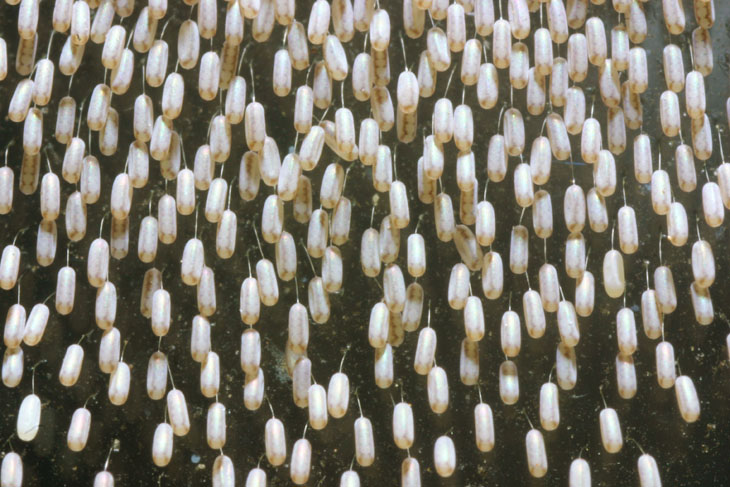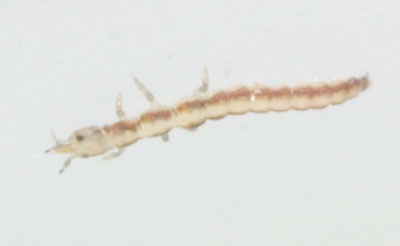
Well, okay, it’s really hard to refer to the dead of winter in the mid-latitude US in normal circumstances, and it seems it’s going to keep getting harder to do that with warming trends. The temperatures yesterday and today exceeded 21°c (70°f,) spurring some activity not just from me, but from other critters as well.
 Above, a red-tailed hawk (Buteo jamaicensis) rides a thermal in a spiral pattern, completely ignoring the cluster of American crows (Corvus brachyrhynchos) that were none too happy about its presence. While at right, an early-morning downpour and the temperature increase sparked fog all day long Friday, which made this American toad (Bufo americanus) hang out by the front walk for the day; I am ashamed to say that I never spotted it at all, while The Girlfriend saw it twice and directed my attention to it. Since I’ve been recovering from a persistent illness (part of the reason the posts have been so slow,) I decided not to get soaked crawling around trying to do a selection of poses and compositions, and let this guy go his merry way after only a few frames.
Above, a red-tailed hawk (Buteo jamaicensis) rides a thermal in a spiral pattern, completely ignoring the cluster of American crows (Corvus brachyrhynchos) that were none too happy about its presence. While at right, an early-morning downpour and the temperature increase sparked fog all day long Friday, which made this American toad (Bufo americanus) hang out by the front walk for the day; I am ashamed to say that I never spotted it at all, while The Girlfriend saw it twice and directed my attention to it. Since I’ve been recovering from a persistent illness (part of the reason the posts have been so slow,) I decided not to get soaked crawling around trying to do a selection of poses and compositions, and let this guy go his merry way after only a few frames.
The mist also highlighted some things that would have been next to invisible otherwise, such as this minuscule orb weaver on the rosemary bush. Curiously, the radial anchor strands of web were all that had been completed, and I can only speculate on the purpose. Perhaps the spider maintains them for the ability to quickly add the wheel portion, but then it seems odd to be perched in the center where it really doesn’t do any good. Most spiders seek shelter at one of the upper corners of the web anchors when danger threatens, or during sub-optimal hunting times (often meaning ‘daylight,’) so drawing attention to oneself in this manner seems counter-productive. I know from having seen it several times before that this species is one of the type that forms a vertical line of debris in the center of the web, among which it sits nicely camouflaged.

But now here’s something I didn’t expect. Back at the very beginning of December, I noticed a strange new spot on the kitchen window, which turned out to be a cluster of tiny eggs, all on little stalks. This generally spells “lacewing,” a pretty generic term for numerous species of arthropod in the order Neuroptera. One species, newly hatched, can be seen as number 7 here.

I’ve seen such eggs several times before, but never in a cluster like this, so I continued watching carefully to capture the hatching, all of the time wondering if it was too late in the season for this to be viable. During the warm weather in December, they could easily be seen to be developing (well, “easily” meaning at quite high magnification, anyway.)

Then we had several overnight frosts, and I figured I could probably stop watching – it seemed unlikely that the developing pupae embryos would have survived the temperature drop. Yet, glancing out the window this morning, the cluster had taken on a distinctly new appearance, and I trotted out with the camera to photograph the new arrivals.

 Lacewings have a wide variety of larval forms. At least one species has appendages along their bodies that allow the attachment of debris for camouflage, while another is more commonly known as an “ant lion,” burying itself in a cone-shaped depression in the sand and capturing whatever insects stumble into the trap. At right sits an individual from this hatching, a scant one millimeter in length, and this is probably as good as I’m going to get – collecting this one was difficult enough. I coaxed a few onto the tip of a scalpel blade and then had a hard time convincing them to get back off; using tweezers was out of the question, since I haven’t seen anything fine enough to even grasp the body, presuming I had a delicate enough touch not to crush them anyway (if it helps to imagine this, an ordinary straight pin is roughly six times the diameter of their teeny bodies.) So far, these images aren’t enough to let me pin down the species any closer.
Lacewings have a wide variety of larval forms. At least one species has appendages along their bodies that allow the attachment of debris for camouflage, while another is more commonly known as an “ant lion,” burying itself in a cone-shaped depression in the sand and capturing whatever insects stumble into the trap. At right sits an individual from this hatching, a scant one millimeter in length, and this is probably as good as I’m going to get – collecting this one was difficult enough. I coaxed a few onto the tip of a scalpel blade and then had a hard time convincing them to get back off; using tweezers was out of the question, since I haven’t seen anything fine enough to even grasp the body, presuming I had a delicate enough touch not to crush them anyway (if it helps to imagine this, an ordinary straight pin is roughly six times the diameter of their teeny bodies.) So far, these images aren’t enough to let me pin down the species any closer.
 This image from last summer shows a variety of brown lacewing, family Hemerobiidae, but the difference in coloration makes me think they’re not the same, even though I suspect they will bear more than a passing resemblance later on in life. This one had attracted an ant with its liquid deposit, and I suspect that this is actually a beneficial trait, since later on I found it eating said ant, producing a tighter food circle than one would normally expect.
This image from last summer shows a variety of brown lacewing, family Hemerobiidae, but the difference in coloration makes me think they’re not the same, even though I suspect they will bear more than a passing resemblance later on in life. This one had attracted an ant with its liquid deposit, and I suspect that this is actually a beneficial trait, since later on I found it eating said ant, producing a tighter food circle than one would normally expect.
Later on, I’ll do a post solely on ant lions, since they’re pretty entertaining on their own (in a creepy way, of course, but I’ve given up on trying to avoid such things and am now reveling in them.)
The temperature is supposed to drop again real soon, and once these little buggers leave the empty egg cases I’m not going to spot them again until they get a lot of meals under their belts – safe to say their plight will remain unknown. Since they did so well with the frosts, maybe they’ll be able to brave the winter and start maturing in the spring. I’ve been toying with the idea of trying to collect and keep a few in a terrarium, but I’m really not sure if I could scare up any grub for them, and I’ve never possessed bottle-feeding skills (when I was doing wildlife rehab, I left the baby animals to others and stuck with the adults.) Not to mention that they could slip through the tiniest of cracks, so I’d have to create a special enclosure anyway. Better to just let them cope as intended; after all, if momma really was making a mistake in laying eggs this late, those genes do not need my help in defying natural selection ;-)
 One last image, because it helps to have a scale shot – chances are you’d never notice one of these walking on you at all. The Girlfriend even asked how I’d spotted the egg cluster in the first place, but that’s one of the traits you develop when chasing bugs; while it looked very much like a splash of dirty water on the window, it was much more uniform than expected (before they’d hatched, anyway,) warranting a closer look. Such things don’t always reveal anything interesting at all, but when they do, it’s worth the extra attention.
One last image, because it helps to have a scale shot – chances are you’d never notice one of these walking on you at all. The Girlfriend even asked how I’d spotted the egg cluster in the first place, but that’s one of the traits you develop when chasing bugs; while it looked very much like a splash of dirty water on the window, it was much more uniform than expected (before they’d hatched, anyway,) warranting a closer look. Such things don’t always reveal anything interesting at all, but when they do, it’s worth the extra attention.



















































